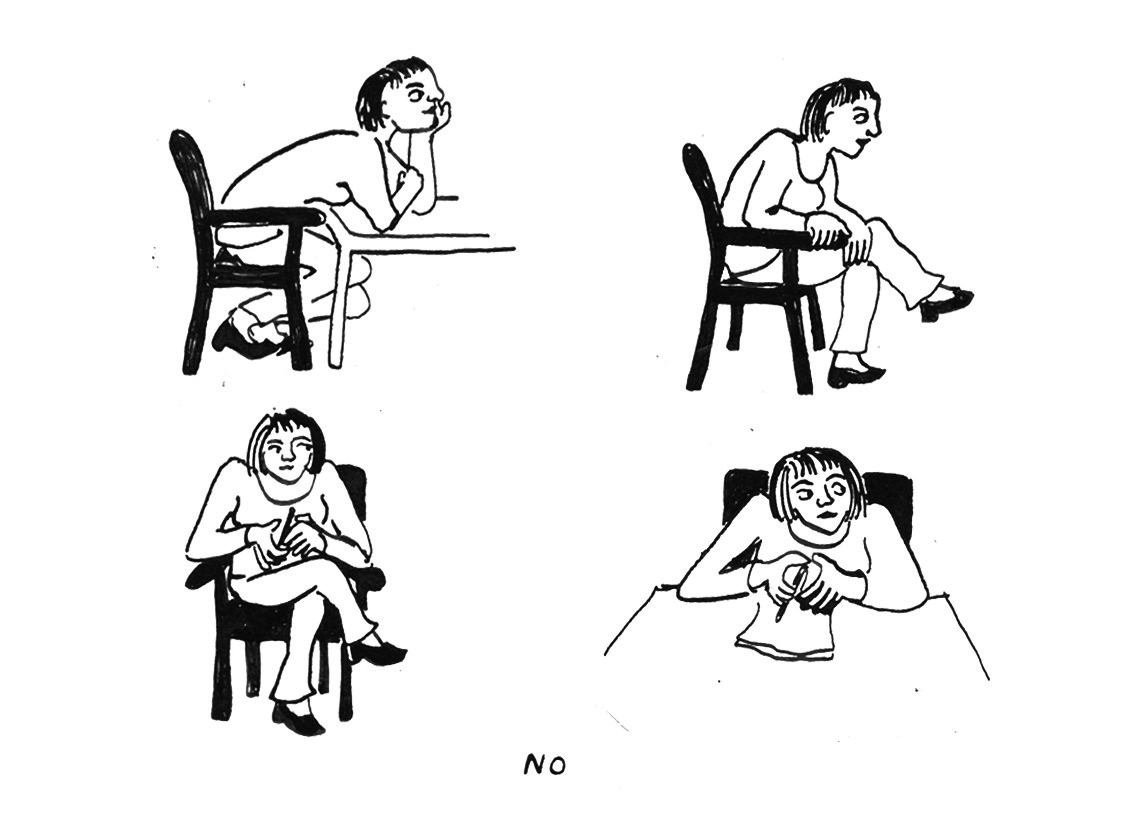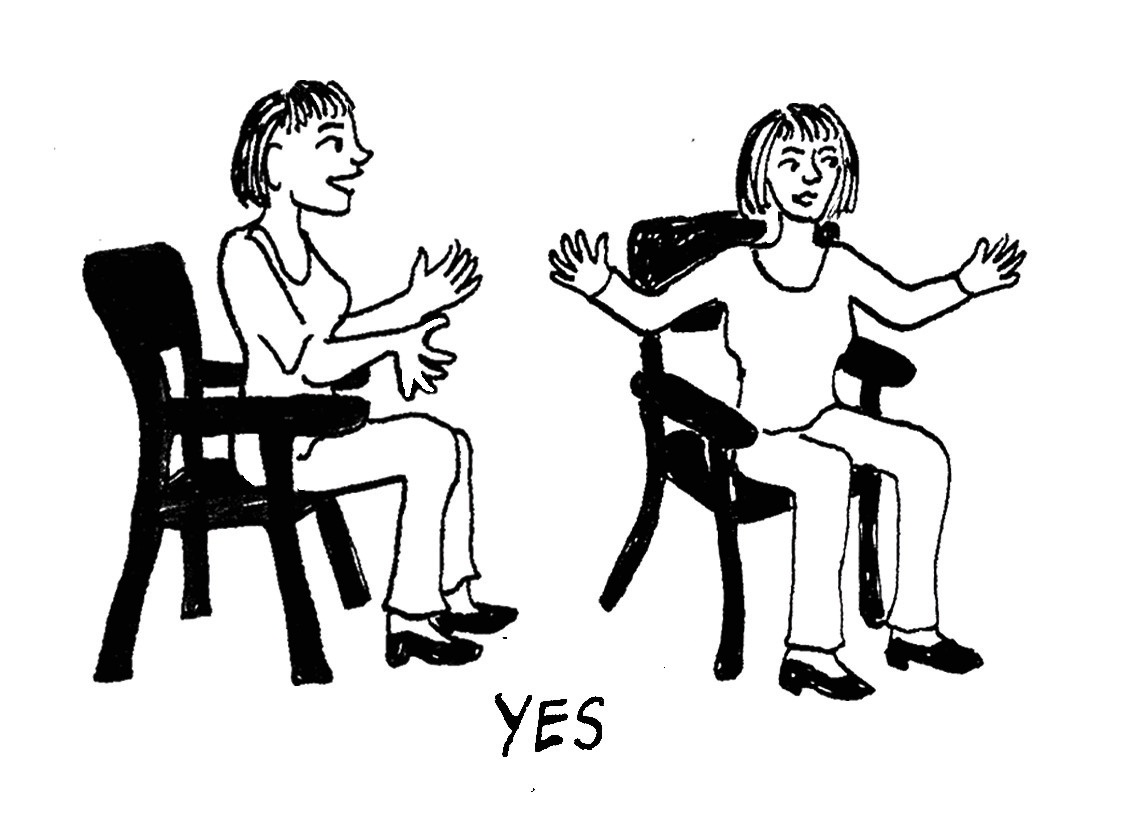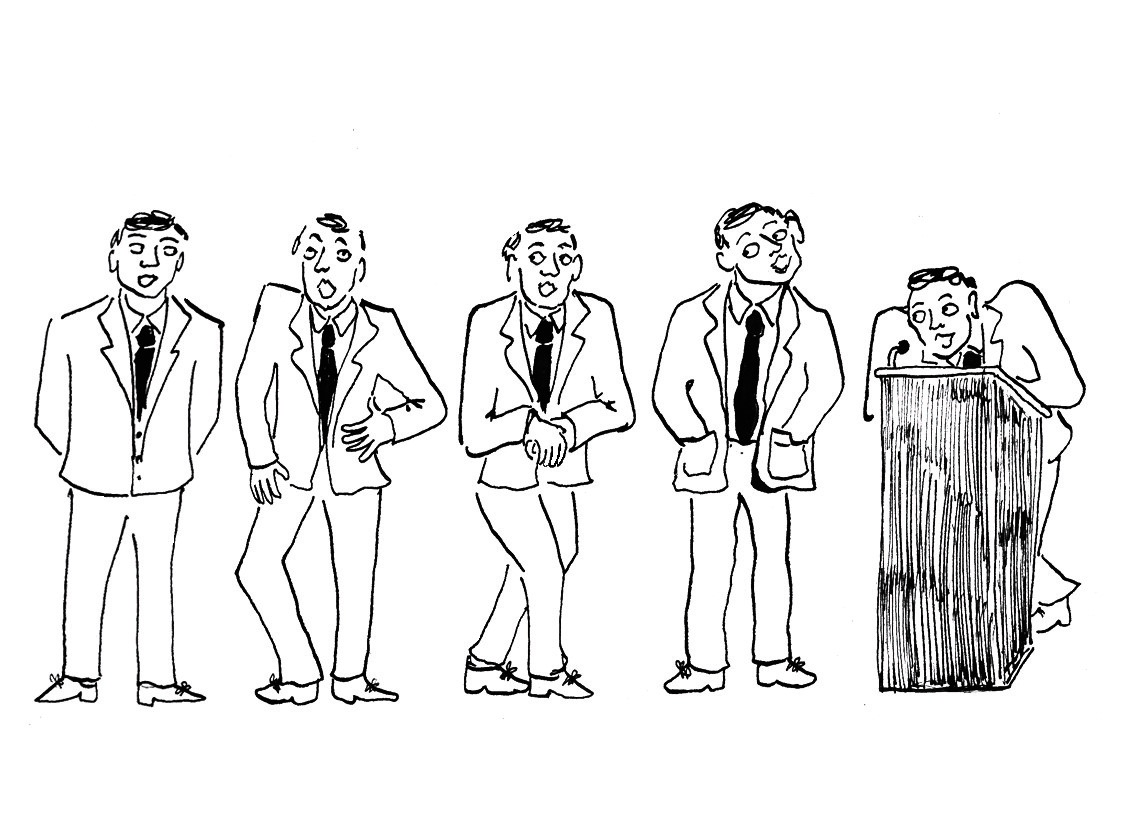In the first of three blog posts Author, Broadcaster and Communication Trainer Edie Lush looks at physical energy (body language) and how you can cover nerves and appear confident and comfortable – regardless of how you are feeling. Her next two blog posts will look at vocal energy and content. The excerpts below are from her book How To Speak with Confidence in Public – through this link.
I remember sometime a few months after the birth of my second child getting an important call at a less than perfect time. I ended up breastfeeding the baby with my mobile phone crushed between my ear and shoulder while somehow taking notes on suggested speakers for a literary festival I was organising. I managed to pull that call off. Several others didn’t go so well – I also remember a call when the baby rolled off the bed and burst into tears – all my attempts to multitask scuppered and feeling guilty and inadequate!
I have worked for others and for myself while raising a family of three together with my husband and various kinds of help at home. I’m a broadcast journalist, an author, an event MC and a communications trainer. Sometimes the see-saw of work-life is balanced. Most of the time it isn’t. I remember so many times of not feeling my best, of not being totally together for a meeting, of feeling out of practice, or just very very very tired and not on my game when the kids were young. They’re older and – while they still need attention and time – I don’t have that dreadful feeling of exhaustion / depression that I had when they were small.
I wanted to share a few parts of the book that I co-wrote with Charlotte McDougall that might be helpful for other Working Mothers who are either coming back after some time off or are taking a step up in their job and need to polish up their communication skills. Many of my favorite clients are women – I’ve worked with women who have just started speaking in public, women who are taking on board roles where they need to speak truth to power, women who are coming back to work after a break and have the fear of being found out and women who feel like they just need a refresher in what good communication looks like.
I divide good communication into two parts – the how and the what. The how is – how do you look and sound comfortable and confident, how do you speak with gravitas and impact. The what is – how do you structure your messages in a personable and compelling way? And how do you deal with nerves?
Starting with the how do you look confident and comfortable –
Thinking about all the different communication situations you find yourself in at work, what most affects your energy levels? The answer is how you feel. Tiredness makes the most obvious impact. Perhaps you have a new baby who is not sleeping through the night? Perhaps you have been out late the night before? Perhaps you haven’t been kick-started by your regular morning espresso? There might be other factors. How do you feel about the meeting? Perhaps you are bored by the content. Do you think this meeting is a waste of time? Are you nervous? Is your boss in the room, and is he or she always critical of your performance? Perhaps you are nervous because you have an opportunity to pitch to a new client and you don’t want to mess it up. Or perhaps you are nervous because you haven’t had enough time to prepare?
All of these factors affect your energy levels. All of these factors affect your ability to be effective.
Dynamic Energy
Over the years my clients have come up with wonderful synonyms for this concept of extra energy or power. ‘Oomph’, ‘gusto’, ‘pizzazz’ and ‘dynamic’ are some of my favourites. Having ‘oomph’ allows us to lead and steer the energy levels in the meeting room. Human beings mirror one another: we mirror each other when we have low energy, and we mirror each other when we are using dynamic energy.
I asked Olivier Oullier, Professor of Behavioural and Brain Sciences at Aix-Marseille University in France, why this is. He told me about his work on what he calls ‘social coordination dynamics’. He and his colleagues placed pairs of people in front of one another and asked them to make a series of movements. It was up to them which movements they chose. First they performed their movements with their eyes closed. When they could not see each other, their movements were not influenced by each other. But when Professor Oullier asked his pairs to open their eyes while performing their movements, their actions started to mirror each other. In Oullier’s scientific world, this is called ‘spontaneous interpersonal synchronization’. We can settle on ‘mirroring’.
What is intriguing about Oullier’s work is that the behaviour of each individual remained influenced by the social encounter even after the information exchange had been removed. It became what he calls a kind of social memory. When asked to perform their action again, there were ‘remnants and echoes’ of the other person’s movements. This suggests that if you are dynamic, or full of energy in your speech, your audience can become more energetic and actively engaged in what you are saying.
We’ve all experienced the moment when someone yawns, and we yawn back (in fact, we only have to see a picture of someone yawning to trigger the yawn impulse in ourselves). Equally, when someone smiles at us, we tend to smile back. This is because our brain mirrors what others do, and encourages us to do the same.
Taking responsibility and consciously upping our energy levels means that our listeners start, unconsciously, to increase their own energy. The negative cycle begins to turn positive.
How high do our energy levels have to be?
The short answer to this is: higher than you think. In order to be engaging and compelling, we have to switch some- thing on. The good news is that this is something we are used to doing. Think about the last time you had a party: in host/hostess mode, you instinctively have more energy and vibrancy than anyone else in the room. Think about a first date: you are hyper-aware of how irresistible, attractive and witty you want to appear. In such situations, your energy levels shoot up without your knowing it. But at work, when you are speaking in public or during an important meeting, you have to learn how to consciously switch on your energy.
Low dynamic energy makes you feel less powerful
In 1822, Charles Darwin identified that expansiveness among animals equals power. Chimpanzees pick up sticks and hold them out to make themselves look bigger. Cobras physically expand. Cats make their hair puff out in order to increase their size. A great deal of work has been done around how humans do the same when they feel powerful. Amy Cuddy’s research on the effect of body posture on our minds is fascinating in this regard. Think of gymnasts when they finish a routine. They lift their chin and hold up their arms. When a sprinter is first to cross the finishing line, she throws her hands in the air. What is fascinating is that even congenitally blind people do this – it is a totally innate response to winning, or to feeling power. When a sports team wins, fans on the winning side of the stadium throw their arms into the air as a sign of victory. They feel powerful, confident and assertive. Equally, when we feel powerless, we physically shrink. We tilt our heads in submissiveness. We cross our legs when we stand. We try to make ourselves look smaller.
Cuddy’s work is around how we can reverse these occurrences. We can change how we feel by changing the way we sit and stand. Cuddy has looked at how our posture is always communicating information to our minds. Testosterone is the chemical released by the brain when we feel assertive, confident, risk-tolerant and competitive. Cortisol makes us feel stressed, anxious, insecure, fearful, defensive and risk-avoidant. When we expand, the testosterone increases and the cortisol decreases. If we hold positions of higher power – what Cuddy calls ‘power poses’ – we can actually start to change the chemicals our brain releases. We can decrease the cortisol levels and increase the testosterone levels. Clinical psychologists have discovered that making people sit up straight leads to them feeling more optimistic. Children who sit more upright when they take exams are found to write more creatively.
This work has implications for us as speakers. The way we stand or sit can affect how we feel. So let’s look at how to give ourselves the best chance of feeling, as well as looking, confident and composed.
Everyone can learn techniques for increasing their energy and animation levels.
Let’s look at physical energy.
Posture: sitting down
BIG NO: It is tempting to tuck ourselves in to the meeting table and rest our elbows/hands either on the table or the arms of the chair. The table can provide a nice comfort blanket for us. We can hide behind it. This is dangerous because it means our ‘core’ collapses (think Pilates) and we appear slumped, saggy and physically smaller than we are. At its worst, we appear physically timid or apologetic. This posture can increase your cortisol levels. You are not doing your mind any favours by sitting this way.
You might reach for a pen as another kind of comfort blanket. Danger: it can be distracting for others to watch you twiddle with your pen.
BIG YES: Take your chair away from the table and sit up tall. Put the pen down! Make sure your knees aren’t tucked in to the table, uncross your legs and plant both feet firmly on the ground in front of you. Imagine there is a string pulling up to the sky from the crown of your head. At first it feels odd, it feels forced. But this is about owning your space and managing your presence. We have to literally ‘be present’ at the table.
Posture: standing up
As an audience we immediately make judgements and assumptions based on the visual cues we are being given. With no table to hide behind, standing can make us feel exposed and vulnerable.
BIG NO: Standing with weight on one leg – you might imagine you look relaxed. Danger: it can appear over-casual or awkward.
Standing with one leg crossed in front of the other – this might feel comfortable for you. Danger: it can make you look nervous, or like you need to go to the bathroom. I see a lot of women do this. It seems as if they are trying to make themselves smaller – as if they don’t deserve to be present. They are afraid of getting found out.
Head on one side – you might imagine that you look em- pathetic, full of listening and understanding. Danger: this pose can appear apologetic or cause your status to drop. It can also come across as condescending.
Standing behind a lectern – this might feel safe and comfort- able. Danger: it’s a barrier between you and the audience you are trying to connect with. For me, it says, ‘I don’t like public speaking, I don’t like being looked at, I am not feeling confident here.’ As an audience member, it also suggests that I am about to be ‘transmitted at’ by someone rather than ‘talked with’. For bigger events when you need to speak into a microphone, always insist on a lapel mic with a battery pack so that you can walk around.
What do I do with my hands?
Ah, the big question. I have been asked this countless times. Isn’t it peculiar that when we are in the spotlight or under pressure, suddenly our hands start to feel like strange bananas at the ends of our arms and we don’t know where to put them or what to do with them? These are some of the things that we tend to do to compensate:
Hands behind our back – danger: we look like policemen or nightclub bouncers.
Hands in pockets – danger: over-casual, ‘I don’t give a damn.’
Hands twiddling and fidgeting, e.g. with a pen or a wedding ring – danger: I’m feeling nervous and agitated up here.
Hands on hips – danger: can appear aggressive or confrontational. We look like a cowboy. Amy Cuddy would point out that this is a power pose, which is true. However, it looks weird on stage, especially when held for extended periods of time.
BIG YES: Make sure you are positioned directly facing the audience. Stand with your feet positioned at the width of your hips, and your weight evenly distributed. Check that your chest is open rather than collapsed. Imagine there is a string attached to the crown of your head pulling you up to the sky. Now you are starting to own your space. You are starting to look tall, open and comfortable. Your cortisol levels will drop, and your testosterone will rise.
Hands. Get them moving! Use them to illustrate and orches- trate everything you say. Avoid ‘T-Rex arms’ – your hands moving, but your elbows pinched to the side.
If your hands are clamped to your sides, your shoulders will become tense, which can make you seem uncomfortable and self-conscious. Instead, imagine big balloons under your armpits to help fill and own the space to the side of you. Keep your hands moving!
This is what we do in real life. When you are having dinner with friends and family and someone is telling a story, watch them. When we are feeling unselfconscious and relaxed, we are animated and moving the whole time. WE ARE USING OUR HANDS. We exude positive energy.
So, to help us appear relaxed and comfortable at times when we are feeling unrelaxed and uncomfortable, what we have to do is to recreate consciously what we do unconsciously in more relaxed situations.
Thanks to Alice Macdonald for the wonderful illustrations.
To read more about Edie, read her Meet the WoMos blog here









